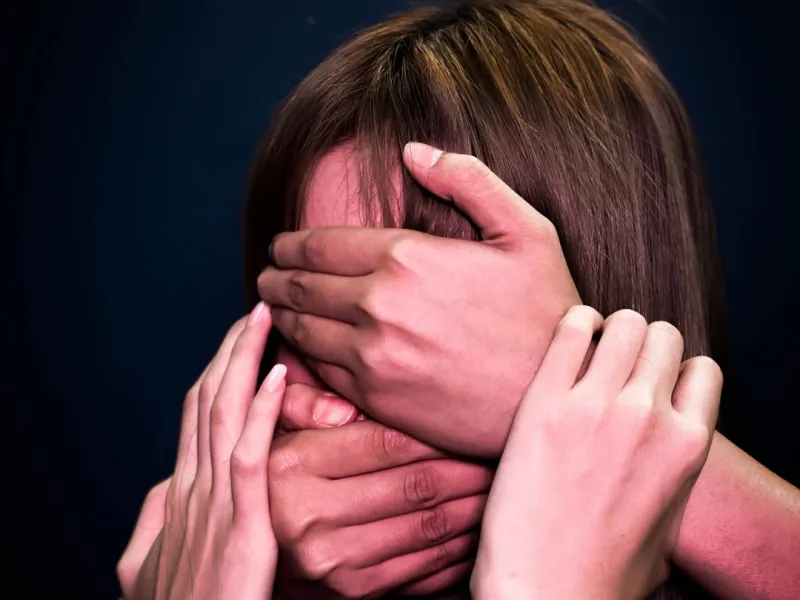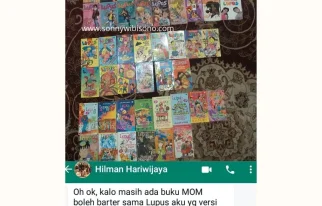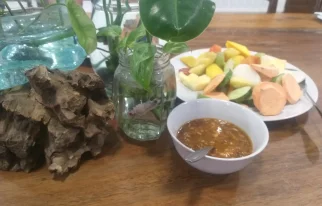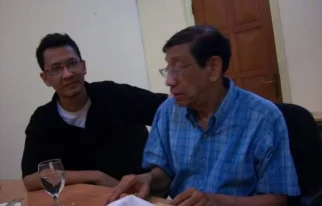
CHILDREN (ALWAYS) FALL VICTIM TO VIOLENCE
CHILDREN (ALWAYS) FALL VICTIM TO VIOLENCE
In Indonesia in 2002 - 2003, both governmental and non-governmental agencies in various cities published reports on child abuse. The city of Solo, for example, occupied second place in the ranks of the cities in the province of Central Java where violence against women and children was most prevalent. Semarang enjoyed the dubious distinction of taking first place. In Yogyakarta in 2002-2003, there were 53 cases of violence against children, 30 cases of rape and 5 cases of sexual abuse. What we may conclude from these figures is that violence is always perpetrated on children regardless of time or place.
Domestic violence against children takes both physical and non-physical forms. Non-physical violence may take the form of abusive language, insults or neglect while physical violence may involve hitting, whipping, the use of sharp or blunt objects against children, and rape.
Domestic violence against children requires urgent attention from society, particularly parents. This is because the results of such abuse can include damage to body organs. Most dangerously, sexual abuse may result in damage to the victims’ reproductive organs and the spread of sexually transmitted disease, and, of course, the risk of pregnancy. Meanwhile, the psychological impacts include mental pressure, fear, stress and trauma. These impacts are not just immediate in effect, but may also continue to be experienced through adulthood as post traumatic stress disorder. Even after many years, the victim may still suffer from hysteria, nightmares and fear.
All of these effects have an impact on the psychological growth and development of children. They may also result in a child resorting to negative and antisocial behavior. Unfortunately, the worrying effects of domestic child abuse, particularly sexual violence, are not matched by the provision of adequate legal protection. Although the Child Protection Law was enacted in 2002, its implementation and enforcement has only been half-hearted to date, and law enforcement agencies and institutions have failed to employ it as a reference in the handling of domestic child abuse cases. Rather, the Criminal Code (KLIHP) continues to be used as the standard reference even though it rails to deal specifically with sexual violence against children. Furthermore, the article most frequently employed in prosecutions, that is article 287, is inadequate and fails to satisfy the public's sense of justice.
Some Causative Factors
Domestic violence against children generally results from the characters and personalities of parents, the pressures they experience in their environments, and factors involving the culture of violence that originate particularly from the media, such as excessive reporting of brutal and sadistic acts, and TV shows that exploit violence. New-found press freedom has not been accompanied by clear rules of the game and ethics that must be complied with by media outlets. As a result, we may say that the media has lost its way. Many TV stations and press outlets, ranging from newspapers and magazines to tabloids, carry reports and pictures that should not be viewed by children. What they see in the media hardens their sensitivities, and frequently has direct effects on them. For example, teenagers raping under-5s after watching "racy" TV' shows or seeing erotic pictures in tabloids.
Environment plays a role in the incidence of violence, for example, cases where parents are stressed from work. Parents who suffer stress or pressures at work normally bring these home with them. Such parents often become easily angered, vent their frustrations on their children. Another factor that leads to violence against children is the feeling of arbitrary power that many parents have in respect, of their children, and the view that children arc like "second-class" human beings that do not have the right to express opinions. As a result, parents tend to treat their children as they please.
Eliminating or minimizing domestic child abuse will require a series of integrated measures, and the involvement of all elements in society. From the external perspective, the role of the media will need to be reviewed so as to ensure that violence is no longer exploited in reports, pictures and 'IV programs. Proper legal pointers will be needed for the media regarding how it can play a role in ensuring the protection of children through controlling and limiting the amount of violent, material depicted.
Most important, however, are the internal factors, that is, those that exist within the home. Religious, character and moral education must he given as early as possible to children. Parents must set a good example to their children. In reality, moral education should be concerned with character and altitude formation so that children are encouraged to shun violence and arbitrary attitudes. Every family has the responsibility to provide moral education so that its members stay clear of violent and arbitrary behavior vis-à-vis the family's children. However, we must nevertheless accept that families will not be fully capable of doing this unless they are supported by outside factors, such as guidance from religious and community figures, and child protection organizations.
The legal system must also provide adequate protection to children. This writer agrees with the view that shock therapy needs to be applied to those who perpetrate violence against children. In order to set an example, heavy sanctions need to be imposed on those who rape children, particularly in cases of incest.
Finally, a strong political will on the part of the government is essential. This will need to lie supported by all elements in society and the mass media.
In a patriarchal culture, a victim of domestic violence faces multiple layers of obstacles in obtaining legal protection, such as:
1. Difficulties in reporting her case as it would mean bringing shame upon the family;
2. Reluctance to make a report as the victim is afraid she will be blamed for not been able to take care of her family, as reflected in the old saying: "there's no smoke without fire".
3. Afraid that making, a report: will only exacerbate the violence she. is subjected to. The fear is that the husband will become even more violent if he knows that his wife/child has reported him -something that affects his social status- as the head of the-family.
4. Afraid that making a report will result in her husband; divorcing her. What will happen to the children?
5. The victim makes a report to the police, but the police do not take the complaint seriously as they regard it as a private matter. Not all police officers work in Special Service Unit (RPK)s
6. The victim reports the abuse, is dealt with by a female police officer in the RPK, but it proves difficult to prove the abuse suffered (comes up against the Criminal Procedures Code).
7. The victim reports the abuse and there is strong evidence- The abuse, however, carries the threat of imprisonment for the perpetrator. This means the victim's husband will be locked up. How is the family to live? Who is to pay for the children's education? These problems arise as the social system ensures that the wife is dependent economically on the head of the household. (source: www.lbh-apik.or.id)
* Publish at Kalingga Magazine, English Version, Edition July - August 2004
In Indonesia in 2002 - 2003, both governmental and non-governmental agencies in various cities published reports on child abuse. The city of Solo, for example, occupied second place in the ranks of the cities in the province of Central Java where violence against women and children was most prevalent. Semarang enjoyed the dubious distinction of taking first place. In Yogyakarta in 2002-2003, there were 53 cases of violence against children, 30 cases of rape and 5 cases of sexual abuse. What we may conclude from these figures is that violence is always perpetrated on children regardless of time or place.
Domestic violence against children takes both physical and non-physical forms. Non-physical violence may take the form of abusive language, insults or neglect while physical violence may involve hitting, whipping, the use of sharp or blunt objects against children, and rape.
Domestic violence against children requires urgent attention from society, particularly parents. This is because the results of such abuse can include damage to body organs. Most dangerously, sexual abuse may result in damage to the victims’ reproductive organs and the spread of sexually transmitted disease, and, of course, the risk of pregnancy. Meanwhile, the psychological impacts include mental pressure, fear, stress and trauma. These impacts are not just immediate in effect, but may also continue to be experienced through adulthood as post traumatic stress disorder. Even after many years, the victim may still suffer from hysteria, nightmares and fear.
All of these effects have an impact on the psychological growth and development of children. They may also result in a child resorting to negative and antisocial behavior. Unfortunately, the worrying effects of domestic child abuse, particularly sexual violence, are not matched by the provision of adequate legal protection. Although the Child Protection Law was enacted in 2002, its implementation and enforcement has only been half-hearted to date, and law enforcement agencies and institutions have failed to employ it as a reference in the handling of domestic child abuse cases. Rather, the Criminal Code (KLIHP) continues to be used as the standard reference even though it rails to deal specifically with sexual violence against children. Furthermore, the article most frequently employed in prosecutions, that is article 287, is inadequate and fails to satisfy the public's sense of justice.
Some Causative Factors
Domestic violence against children generally results from the characters and personalities of parents, the pressures they experience in their environments, and factors involving the culture of violence that originate particularly from the media, such as excessive reporting of brutal and sadistic acts, and TV shows that exploit violence. New-found press freedom has not been accompanied by clear rules of the game and ethics that must be complied with by media outlets. As a result, we may say that the media has lost its way. Many TV stations and press outlets, ranging from newspapers and magazines to tabloids, carry reports and pictures that should not be viewed by children. What they see in the media hardens their sensitivities, and frequently has direct effects on them. For example, teenagers raping under-5s after watching "racy" TV' shows or seeing erotic pictures in tabloids.
Environment plays a role in the incidence of violence, for example, cases where parents are stressed from work. Parents who suffer stress or pressures at work normally bring these home with them. Such parents often become easily angered, vent their frustrations on their children. Another factor that leads to violence against children is the feeling of arbitrary power that many parents have in respect, of their children, and the view that children arc like "second-class" human beings that do not have the right to express opinions. As a result, parents tend to treat their children as they please.
Eliminating or minimizing domestic child abuse will require a series of integrated measures, and the involvement of all elements in society. From the external perspective, the role of the media will need to be reviewed so as to ensure that violence is no longer exploited in reports, pictures and 'IV programs. Proper legal pointers will be needed for the media regarding how it can play a role in ensuring the protection of children through controlling and limiting the amount of violent, material depicted.
Most important, however, are the internal factors, that is, those that exist within the home. Religious, character and moral education must he given as early as possible to children. Parents must set a good example to their children. In reality, moral education should be concerned with character and altitude formation so that children are encouraged to shun violence and arbitrary attitudes. Every family has the responsibility to provide moral education so that its members stay clear of violent and arbitrary behavior vis-à-vis the family's children. However, we must nevertheless accept that families will not be fully capable of doing this unless they are supported by outside factors, such as guidance from religious and community figures, and child protection organizations.
The legal system must also provide adequate protection to children. This writer agrees with the view that shock therapy needs to be applied to those who perpetrate violence against children. In order to set an example, heavy sanctions need to be imposed on those who rape children, particularly in cases of incest.
Finally, a strong political will on the part of the government is essential. This will need to lie supported by all elements in society and the mass media.
In a patriarchal culture, a victim of domestic violence faces multiple layers of obstacles in obtaining legal protection, such as:
1. Difficulties in reporting her case as it would mean bringing shame upon the family;
2. Reluctance to make a report as the victim is afraid she will be blamed for not been able to take care of her family, as reflected in the old saying: "there's no smoke without fire".
3. Afraid that making, a report: will only exacerbate the violence she. is subjected to. The fear is that the husband will become even more violent if he knows that his wife/child has reported him -something that affects his social status- as the head of the-family.
4. Afraid that making a report will result in her husband; divorcing her. What will happen to the children?
5. The victim makes a report to the police, but the police do not take the complaint seriously as they regard it as a private matter. Not all police officers work in Special Service Unit (RPK)s
6. The victim reports the abuse, is dealt with by a female police officer in the RPK, but it proves difficult to prove the abuse suffered (comes up against the Criminal Procedures Code).
7. The victim reports the abuse and there is strong evidence- The abuse, however, carries the threat of imprisonment for the perpetrator. This means the victim's husband will be locked up. How is the family to live? Who is to pay for the children's education? These problems arise as the social system ensures that the wife is dependent economically on the head of the household. (source: www.lbh-apik.or.id)
* Publish at Kalingga Magazine, English Version, Edition July - August 2004
Latest Post
 SELAMAT JALAN MAS HILMAN
SELAMAT JALAN MAS HILMANSaya dan my sister mengoleksi novel Lupus sejak masih remaja. Beberapa hilang karena dipinjam dan tak pernah kembali. Akhirnya saya beli lagi. Dulu mencarinya penuh perjuangan. Dari satu toko buku ke toko buku lainnya. Tak terkecuali lapak buku bekas Pasar Senen disinggahi. Dulu belum ada toko online semacam tokopedia, bukalapak, shopee dan lainnya.
 IKAN CUPANG DAN RUJAK
IKAN CUPANG DAN RUJAKSaat menyantap rujak buah di meja rapat dengan para kolega sambil melihat ikan cupang yang berada dihadapan kami, saya bertanya ke para kolega, apa persamaan dan perbedaan ikan cupang dan rujak buah. Mereka cuma bingung dengan pertanyaan aneh tersebut.
 SAAT PAK HARTO MEMANGGIL PARA MENTERINYA
SAAT PAK HARTO MEMANGGIL PARA MENTERINYALangkanya minyak goreng yang terjadi di sejumlah daerah kembali mengingatkan saya akan perbincangan dengan almarhum Pak Mar’ie Muhammad. Pak MM, biasa kami menyebutnya begitu, merupakan Menteri Keuangan periode Maret 1993-Maret 1998. Beliau menghembuskan nafas terakhirnya pada 11 Desember 2016 di RS PON Jakarta.
KOMENTAR

